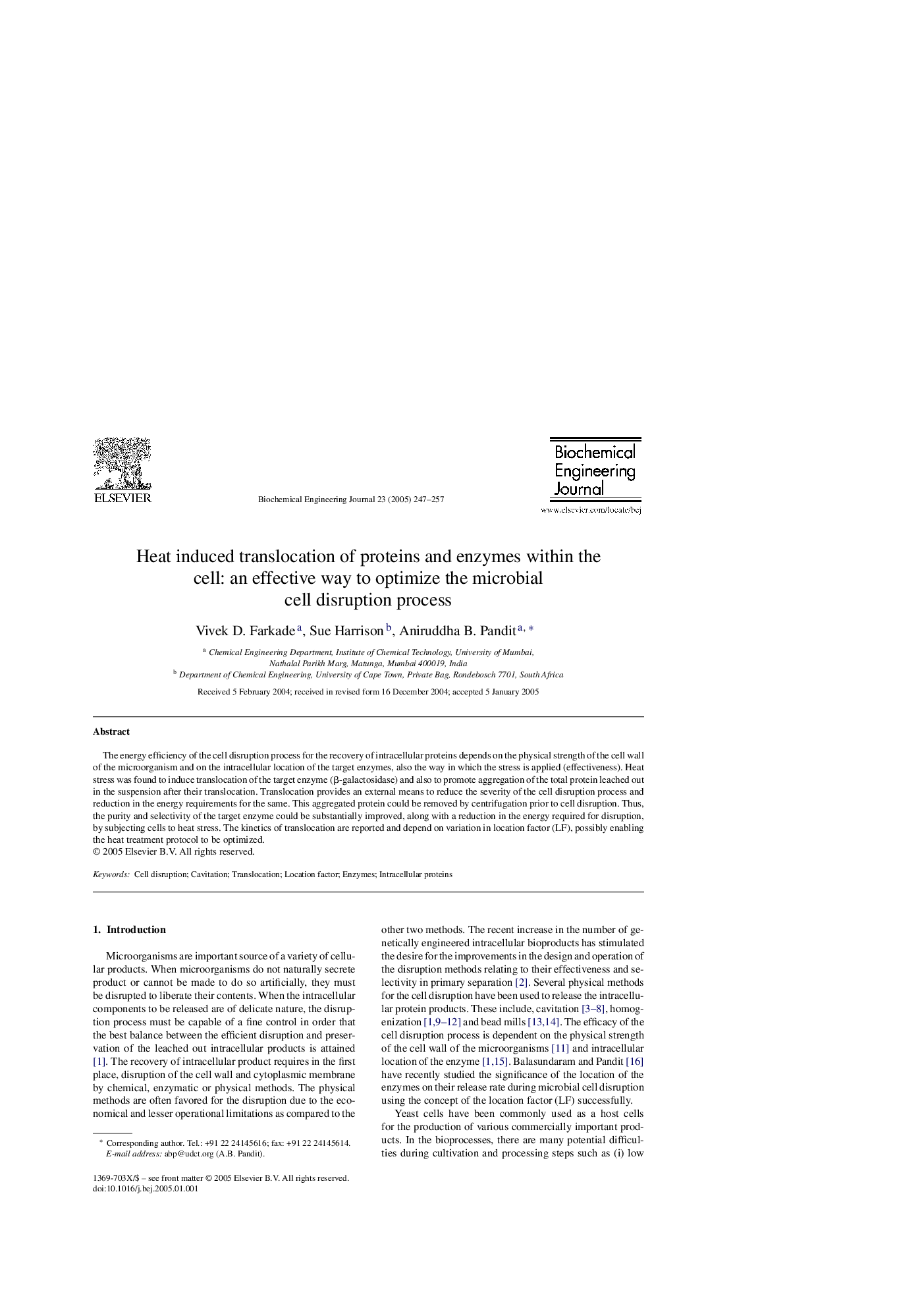| کد مقاله | کد نشریه | سال انتشار | مقاله انگلیسی | نسخه تمام متن |
|---|---|---|---|---|
| 10161240 | 299 | 2005 | 11 صفحه PDF | دانلود رایگان |
عنوان انگلیسی مقاله ISI
Heat induced translocation of proteins and enzymes within the cell: an effective way to optimize the microbial cell disruption process
دانلود مقاله + سفارش ترجمه
دانلود مقاله ISI انگلیسی
رایگان برای ایرانیان
کلمات کلیدی
موضوعات مرتبط
مهندسی و علوم پایه
مهندسی شیمی
بیو مهندسی (مهندسی زیستی)
پیش نمایش صفحه اول مقاله

چکیده انگلیسی
The energy efficiency of the cell disruption process for the recovery of intracellular proteins depends on the physical strength of the cell wall of the microorganism and on the intracellular location of the target enzymes, also the way in which the stress is applied (effectiveness). Heat stress was found to induce translocation of the target enzyme (β-galactosidase) and also to promote aggregation of the total protein leached out in the suspension after their translocation. Translocation provides an external means to reduce the severity of the cell disruption process and reduction in the energy requirements for the same. This aggregated protein could be removed by centrifugation prior to cell disruption. Thus, the purity and selectivity of the target enzyme could be substantially improved, along with a reduction in the energy required for disruption, by subjecting cells to heat stress. The kinetics of translocation are reported and depend on variation in location factor (LF), possibly enabling the heat treatment protocol to be optimized.
ناشر
Database: Elsevier - ScienceDirect (ساینس دایرکت)
Journal: Biochemical Engineering Journal - Volume 23, Issue 3, 1 May 2005, Pages 247-257
Journal: Biochemical Engineering Journal - Volume 23, Issue 3, 1 May 2005, Pages 247-257
نویسندگان
Vivek D. Farkade, Sue Harrison, Aniruddha B. Pandit,